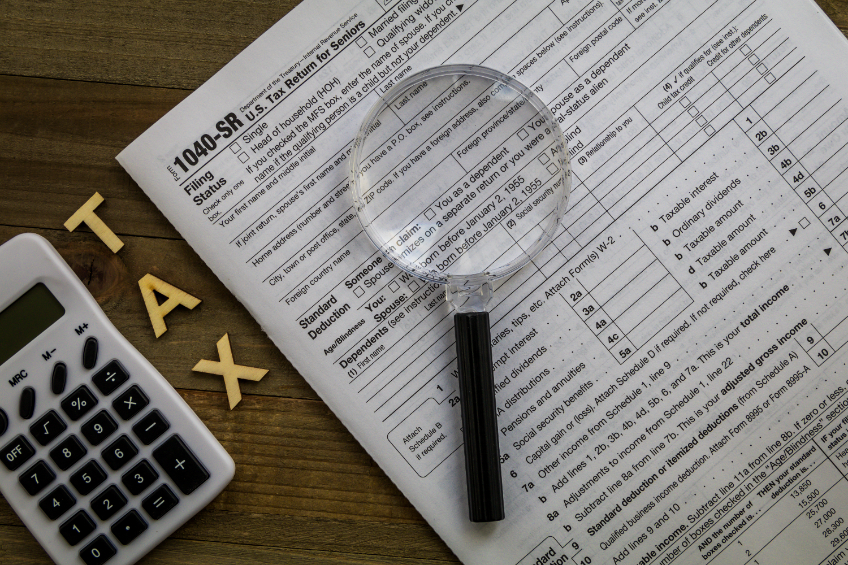
The 1040-SR is a special tax form designed to help seniors file their taxes more easily. It was created as part of the Bipartisan Budget Act of 2018 and has larger text and less shading than the regular 1040, making it easier for those with vision issues to read. It also shows the major, senior-specific deductions that people 65 and older are eligible to claim. Plus, it has lines for income typical for many seniors, such as IRA distributions, pensions, annuities, and Social Security benefits. The regular 1040 doesn’t include these deductions or items in larger text. So if you’re over 65 years old, you should consider using Form 1040-SR when filing your taxes this year!
Who is Eligible to File the 1040-SR Form?
Seniors over the age of 65 are eligible to file the 1040-SR form. The Internal Revenue Service (IRS) requires that all taxpayers filing a Form 1040 must be at least 65 years of age on the last day of the tax year. To qualify, you must have received income during the tax year, such as wages, salaries, tips, taxable scholarships and fellowships, unemployment compensation, or other amounts reported on IRS Form W-2. You may also receive income from qualified retirement plans and IRAs, Social Security benefits, alimony payments or other forms of investment income.
The 1040-SR is an important tool for seniors. It includes larger print sizes to make it easier to read than a regular 1040 form and offers special deductions for those over 65. Plus, it offers lines for income typical for many seniors such as IRA distributions, pensions, annuities and Social Security benefits that aren’t included in a standard 1040 form. If you’re over 65 years old and receive any type of income during the tax season – you should consider using Form 1040-SR when filing your taxes this year!
Social Security Benefits and Other Retirement Plans
Social Security benefits and other retirement plans are great sources of income for seniors. Social Security benefits can provide a steady stream of income throughout your retirement years, while other retirement plans such as 401k or IRA accounts can help supplement your income. It’s important to understand the different types of retirement plans available to you and how they may affect your taxes. When filing your 1040-SR form, make sure to include any Social Security benefits or other retirement plan distributions on the appropriate lines. Additionally, be aware that some forms of income from these sources may qualify you for additional deductions when filing your taxes.
If you’re getting ready to retire, it’s also important to review the rules around required minimum distributions (RMDs) from certain retirement accounts. Be sure to consult with a financial professional if you have questions about RMDs or any other retirement plan related tax topics. With careful planning and preparation, you can maximize the advantages of having a secure income in retirement!
Taxable Scholarships and Grants
Taxable scholarships and grants can be a great way to supplement your income in retirement. However, it’s important to understand the tax implications of these types of income, as they may be subject to taxes depending on their source and use.
When filing your 1040-SR form, make sure to include any taxable scholarship or grant income on the appropriate lines. Additionally, be aware that if you’re receiving these benefits for educational purposes, you may qualify for certain deductions or credits that could reduce your taxable income.
You may also qualify for certain deductions if you are self-employed, such as health insurance premiums and other business expenses. Be sure to check with an experienced professional before filing your taxes to ensure that you’re taking advantage of all the deductions and credits available to you. Additionally, it’s important to keep track of all your self-employment income throughout the year so that you can accurately report it when filing your 1040-SR form.
Capital Gains and Losses from Investment Income
As a senior taxpayer, you may be familiar with the term Capital Gains and Losses from Investment Income. This refers to any profits or losses that you make from buying, selling, or trading investments such as stocks and bonds. When filing your 1040-SR form, it’s important to accurately report these gains or losses so that you can take advantage of any deductions or credits available to you.
Capital Gains are the profits earned when selling an asset for more than what was originally paid for it. These gains are taxable and should be reported on your tax return in order to avoid owing additional taxes down the road. On the other hand, capital losses occur when an asset is sold for less than what was originally paid for it. Fortunately, these losses can be used to offset taxable income up to $3,000 per year in order to reduce your amount owed on taxes.
What About Tax Deductions?
Tax deductions are a great way for seniors to reduce the amount of taxes you owe when filing your 1040-SR form. As a senior, there are specific tax deductions that can help you maximize your savings come tax season.
For instance, the standard deduction for seniors.It allows taxpayers 65 and older to take an additional $1,300 exemption on their taxes if they file as “single” or $2,600 if they file as “married filing jointly”.
Also available is the Deduction for Taxpayers Age 65 or Older. This deduction allows seniors age 65 and older to deduct up to $7,500 from their income if single or $10,000 if married filing jointly.
Lastly, seniors may also be eligible for Qualified Retirement Plans including Traditional IRAs and Roth IRAs which allow contributions of up to $6,000 per year (or $7,000 for those aged 50 or above). Contributions made to these plans can be deducted from your taxable income.
Deduction Options Available to Those Age 65 or Older Filing a 1040-SR Form
As a senior, filing your 1040-SR Form shouldn’t be complicated — but it can be. That’s why we’re here to help! Filing taxes as a senior doesn’t have to be scary or intimidating. You can take advantage of several deductions and credits available exclusively for those age 65 and older.
The Standard Deduction for seniors allows taxpayers 65 and older to take an additional $1,300 exemption on their taxes if they file as “single” or $2,600 if they file as “married filing jointly”. Additionally, you can also deduct up to $7,500 from your income if single or $10,000 if married filing jointly with the Deduction for Taxpayers Age 65 or Older.
Finally, Qualified Retirement Plans including Traditional IRAs and Roth IRAs allow contributions of up to $6,000 per year (or $7,000 for those aged 50 or above). Contributions made to these plans can be deducted from your taxable income.
Whether you’re just starting out in retirement or planning ahead for the future – don’t forget to review all of the tax deductions available specifically for seniors before filing your 1040-SR form.

Sarah Nieschalk
Sarah E. Deierlein Nieschalk, EA, is an experienced tax professional with over a decade of expertise representing taxpayers before the IRS. As an Enrolled Agent and Assistant Vice President of Servicing at Community Tax, LLC, Sarah specializes in resolving complex federal and state tax collection issues, including high-dollar individual liabilities, employment tax challenges, and corporate audits. Since becoming an Enrolled Agent in 2012, she has resolved over 5,000 cases, saving millions for clients while protecting countless businesses. Outside of work, Sarah enjoys painting, staying active, and raising her family of rescued dogs while contributing to nonprofit causes through storytelling events.







